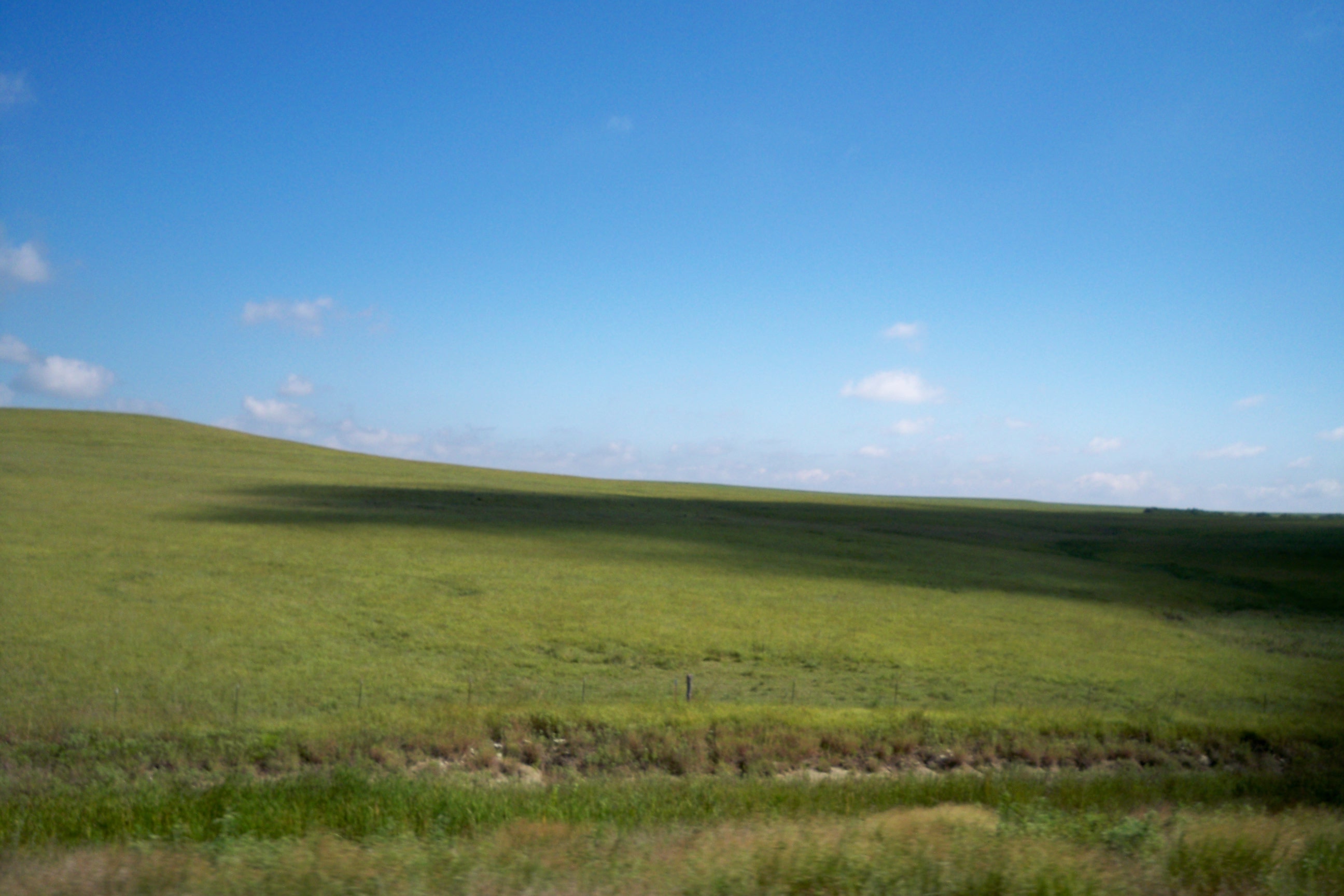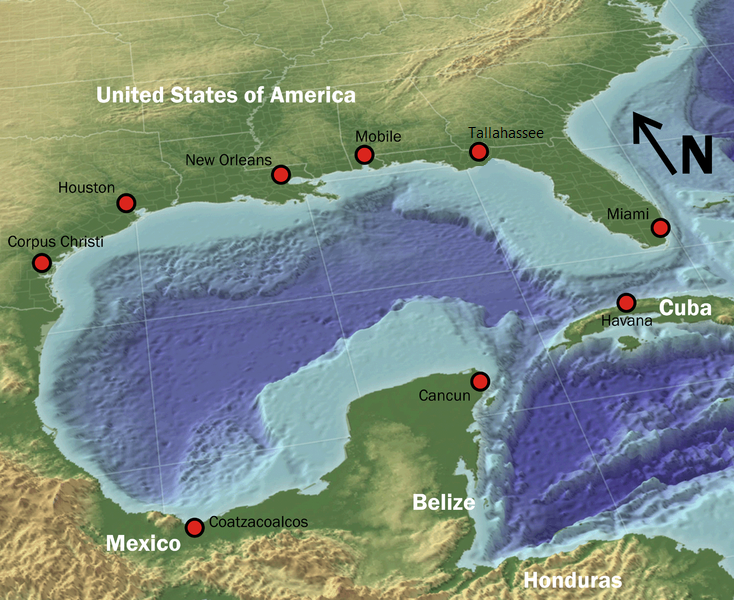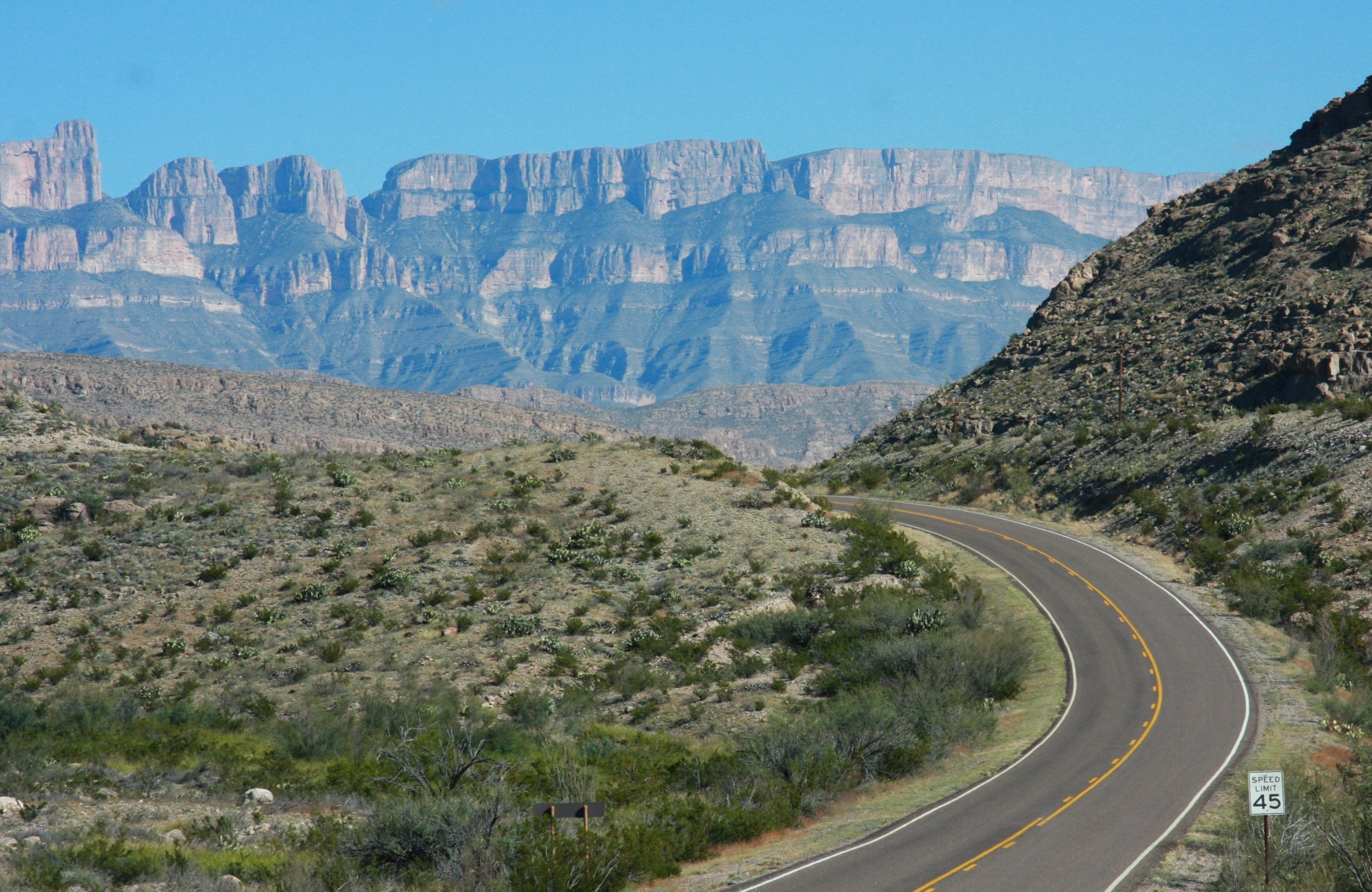|
Sierra Madre Oriental
The Sierra Madre Oriental () is a mountain range in northeastern Mexico. The Sierra Madre Oriental is part of the American Cordillera, a chain of mountain ranges (cordillera) that consists of an almost continuous sequence of mountain ranges that form the western "backbone" of North America, Central America, South America, and Antarctica. Setting Spanning the Sierra Madre Oriental runs from the Rio Grande on the border between Coahuila and Texas south through Nuevo León, southwest Tamaulipas, San Luis Potosí, Querétaro, and Hidalgo to northern Puebla, where it joins with the east-west running Eje Volcánico Transversal of central Mexico. The northernmost are the Sierra del Burro and the Sierra del Carmen which reach the border with the United States at the Rio Grande. North of the Rio Grande, the range continues northwestward into Texas and beyond as the Davis and Guadalupe Ranges. Mexico's Gulf Coastal Plain lies to the east of the range, between the mountains and the Gul ... [...More Info...] [...Related Items...] OR: [Wikipedia] [Google] [Baidu] |
Ciudad Victoria
Ciudad Victoria () is the seat of the Municipality of Victoria, and the capital of the Mexican state of Tamaulipas. It is located in the northeast of Mexico at the foot of the Sierra Madre Oriental. It borders the municipality of Güémez to the north, Llera to the south, Casas Municipality to the east, and the municipality of Jaumave to the west. The city is located from Monterrey and from the US - Mexico border. Ciudad Victoria is named after the first president of Mexico, Guadalupe Victoria. In 1825 Ciudad Victoria became the state capital. It is home to higher education institutions such as the Autonomous University of Tamaulipas and the Technological Institute of Ciudad Victoria. General Pedro José Méndez International Airport is located on the outskirts of the city. As a state bureaucratic centre, it is the seat of the three political powers and has sites of tourist and cultural interest. Pre-foundation The Viceroy of New Spain, Juan Francisco Güémez and ... [...More Info...] [...Related Items...] OR: [Wikipedia] [Google] [Baidu] |
Hidalgo (Mexico)
Hidalgo (), officially the Free and Sovereign State of Hidalgo ( es, Estado Libre y Soberano de Hidalgo) is one of the 31 states which, along with Mexico City, constitute the 32 federal entities of Mexico. It is divided into 84 municipalities and its capital city is Pachuca de Soto. Located in the eastern part of the country, Hidalgo is bordered by San Luis Potosí and Veracruz on the north, Puebla on the east, Tlaxcala and State of Mexico on the south and Querétaro on the west. In 1869, Benito Juárez created the State of Hidalgo and made Pachuca its capital city; Juárez would add the name ''"de Soto"'' in recognition of Manuel Fernando Soto, who is considered the most important driving force in creating the state. The state was named after Miguel Hidalgo y Costilla, the initiator of the Mexican War of Independence. The indigenous peoples of the state, such as the Otomi, retain much of their traditional culture. In addition to Mexicans of Spanish descent, there are a ... [...More Info...] [...Related Items...] OR: [Wikipedia] [Google] [Baidu] |
Serranias Del Burro
The Sierra del Burro (also called Serranías del Burro) is the northernmost finger of the Sierra Madre Oriental in the state of Coahuila, Mexico. The Sierra begins at the Rio Grande near Big Bend National Park in Texas and extends southeast for about , reaching a maximum elevation of . Geography The Sierra del Burro increases in altitude and width as it goes from north to south. At its northernmost point near the Rio Grande, the Sierra is about wide and has a maximum elevation of about . At its southernmost extremity, about 28’ 30° North latitude, it reaches a width of more than and a maximum altitude of near where it merges with the Sierra del Carmen and becomes known as the Sierra Madre Oriental. The Rio San Rodrigo is the largest river originating in the Sierra del Burro. The drainage from the Sierra is to the Rio Grande. The Sierra is located in the Chihuahua Desert, and most of the vegetation is arid or semi-arid desert scrub, including chaparral and Tamaulipan mato ... [...More Info...] [...Related Items...] OR: [Wikipedia] [Google] [Baidu] |
Rainforest
Rainforests are characterized by a closed and continuous tree canopy, moisture-dependent vegetation, the presence of epiphytes and lianas and the absence of wildfire. Rainforest can be classified as tropical rainforest or temperate rainforest, but other types have been described. Estimates vary from 40% to 75% of all biotic species being indigenous to the rainforests. There may be many millions of species of plants, insects and microorganisms still undiscovered in tropical rainforests. Tropical rainforests have been called the "jewels of the Earth" and the " world's largest pharmacy", because over one quarter of natural medicines have been discovered there. Rainforests as well as endemic rainforest species are rapidly disappearing due to deforestation, the resulting habitat loss and pollution of the atmosphere. Definition Rainforest are characterized by a closed and continuous tree canopy, high humidity, the presence of moisture-dependent vegetation, a moist layer of lea ... [...More Info...] [...Related Items...] OR: [Wikipedia] [Google] [Baidu] |
Sierra Madre Occidental
The Sierra Madre Occidental is a major mountain range system of the North American Cordillera, that runs northwest–southeast through northwestern and western Mexico, and along the Gulf of California. The Sierra Madre is part of the American Cordillera, a chain of mountain ranges (cordillera) that consists of an almost continuous sequence of mountain ranges that form the western 'sounds' of North America, Central America, South America and West Antarctica. Etymology The Spanish name ''sierra madre'' means "mother mountain range" in English, and ''occidental'' means "western", these thus being the "Western mother mountain range". To the east, from the Spanish ''oriental'' meaning "eastern" in English, the Sierra Madre Oriental range or "Eastern Mother Mountains" runs generally parallel to the Sierra Madre Occidental along eastern Mexico and the Gulf of Mexico. The range extends from northern Sonora, a state near the Mexico–U.S. border at Arizona, southeastwards to the Trans ... [...More Info...] [...Related Items...] OR: [Wikipedia] [Google] [Baidu] |
Mexican Plateau
The Central Mexican Plateau, also known as the Mexican Altiplano ( es, Altiplanicie Mexicana), is a large arid-to-semiarid plateau that occupies much of northern and central Mexico. Averaging above sea level, it extends from the US-Mexico border, United States border in the north to the Trans-Mexican Volcanic Belt in the south, and is bounded by the and to the west and east, respectively. A low east-west mountain range in the state of Zacatecas divides the plateau into northern and southern sections. These two sections, called the Northern Plateau () and Central Plateau (), are now generally regarded by geographers as sections of one plateau. The Mexican Plateau is mostly covered by deserts and xeric shrublands, with madrean pine-oak woodlands, pine-oak forests covering the surrounding mountain ranges and forming sky islands on some of the interior ranges. The Mexican Altiplano is one of six distinct physiographic sections of the Basin and Range Province, which in turn is part ... [...More Info...] [...Related Items...] OR: [Wikipedia] [Google] [Baidu] |
Gulf Of Mexico
The Gulf of Mexico ( es, Golfo de México) is an oceanic basin, ocean basin and a marginal sea of the Atlantic Ocean, largely surrounded by the North American continent. It is bounded on the northeast, north and northwest by the Gulf Coast of the United States; on the southwest and south by the Mexico, Mexican States of Mexico, states of Tamaulipas, Veracruz, Tabasco, Campeche, Yucatan, and Quintana Roo; and on the southeast by Cuba. The Southern United States, Southern U.S. states of Texas, Louisiana, Mississippi, Alabama, and Florida, which border the Gulf on the north, are often referred to as the "Third Coast" of the United States (in addition to its Atlantic and Pacific Ocean, Pacific coasts). The Gulf of Mexico took shape approximately 300 million years ago as a result of plate tectonics.Huerta, A.D., and D.L. Harry (2012) ''Wilson cycles, tectonic inheritance, and rifting of the North American Gulf of Mexico continental margin.'' Geosphere. 8(1):GES00725.1, first p ... [...More Info...] [...Related Items...] OR: [Wikipedia] [Google] [Baidu] |
Gulf Coastal Plain
The Gulf Coastal Plain extends around the Gulf of Mexico in the Southern United States and eastern Mexico. This coastal plain reaches from the Florida Panhandle, southwest Georgia, the southern two-thirds of Alabama, over most of Mississippi, western Tennessee and Kentucky, into southern Illinois, the Missouri Bootheel, eastern and southern Arkansas, all of Louisiana, the southeast corner of Oklahoma, and easternmost Texas in the United States. It continues along the Gulf in northeastern and eastern Mexico, through Tamaulipas and Veracruz to Tabasco and the Yucatán Peninsula on the Bay of Campeche. Geography The Gulf Coastal Plain's southern boundary is the Gulf of Mexico in the U.S. and the Sierra Madre de Chiapas in Mexico. On the north, it extends to the Ouachita Highlands of the Interior Low Plateaus and the southern Appalachian Mountains. Its northernmost extent is along the Mississippi embayment (Mississippi Alluvial Valley) as far north as the southern tip of Illinois ... [...More Info...] [...Related Items...] OR: [Wikipedia] [Google] [Baidu] |
Cerro De Chipinque
The Cerro de Chipinque is a mountain in the San Pedro Garza García, Monterrey and Santa Catarina municipalities; state of Nuevo León, Mexico. The mountain is part of the Sierra Madre Oriental range and the Cumbres de Monterrey National Park. The summit reaches 2,229 meters above sea level. The mountain is a symbol for the Monterrey metropolitan area. The mountain is surrounded by Santa Catarina valley, San Pedro valley, mount El Mirador, la Silla river, Ballesteros Canyon and La Huasteca canyon. The “Parque ecológico Chipinque” is on the north slope of the mountain. The mountain's name is believed to have originated from the nahualt word "chichipinqui" meaning small rain or from the name of an indigenous chief. File:La m 3.jpg, La eme seen from the plateau of Chipinque Park. File:La m 4.jpg, La eme seen from a hotel at the plateau. File:Cerro Chipinque.png, El Pinar seen from Chipinque History Though this area's beauty was widely known, it wasn't an Ecological Park ... [...More Info...] [...Related Items...] OR: [Wikipedia] [Google] [Baidu] |
Guadalupe Mountains
The Guadalupe Mountains ( es, Sierra de Guadalupe) are a mountain range located in West Texas and southeastern New Mexico. The range includes the highest summit in Texas, Guadalupe Peak, , and the "signature peak" of West Texas, El Capitan, both of which are located within Guadalupe Mountains National Park. The Guadalupe Mountains are bordered by the Pecos River valley and Llano Estacado to the east and north, Delaware Mountains to the south, and Sacramento Mountains to the west. One of the clearest exposures of a prehistoric reef is preserved in the mountain range's bedrock geology. Bedrock contains fossils of reef-dwelling organisms from the Permian period, and the geology is widely studied, mostly by stratigraphers, paleontologists, and Paleoecologists (see geology section). History Archaeological evidence has shown that people lived over 10,000 years ago in and among the many caves and alcoves. The first humans to live here were hunter-gatherers who followed large game ... [...More Info...] [...Related Items...] OR: [Wikipedia] [Google] [Baidu] |
Davis Mountains
The Davis Mountains, originally known as Limpia Mountains, are a range of mountains in West Texas, located near Fort Davis, after which they are named. The fort was named for then United States Secretary of War and later Confederate President Jefferson Davis. They are a popular site for camping and hiking and the region includes Fort Davis National Historic Site and Davis Mountains State Park. The historical and architectural value of the fort, alongside the rugged natural environment of the park are a significant destination for tourism in Texas. Most of the land in the Davis Mountains is under private ownership as ranch land, but The Nature Conservancy owns or has conservation easements on more than . Description Rather than being a single coherent range, the Davis Mountains are an irregular jumble of isolated peaks and ridges separated by flatter areas. The mountains occupy a rough square about on each side. The mountains are of volcanic origin composed of strata associat ... [...More Info...] [...Related Items...] OR: [Wikipedia] [Google] [Baidu] |
Sierra Del Carmen
The Sierra del Carmen, also called the Sierra Maderas del Carmen, is a northern finger of the Sierra Madre Oriental in the state of Coahuila, Mexico. The Sierra begins at the Rio Grande at Big Bend National Park and extends southeast for about , reaching a maximum elevation of . Part of the Sierra del Carmen is protected in the Maderas del Carmen Biosphere Reserve as part of a bi-national effort to conserve a large portion of the Chihuahua Desert in Mexico and Texas. Geography Some authorities include the Chisos and other mountains of Big Bend National Park as part of the Sierra del Carmen. From the Mexican side of the Rio Grande, the Sierra runs southeast for about to 28’ 40° North latitude and a maximum width of about . Elevations increase toward the south culminating in several peaks with heights of more than and a maximum altitude of .Google Earth The western side of the Sierra del Carmen features a high limestone escarpment that formed along a fault line. The Sierra d ... [...More Info...] [...Related Items...] OR: [Wikipedia] [Google] [Baidu] |








